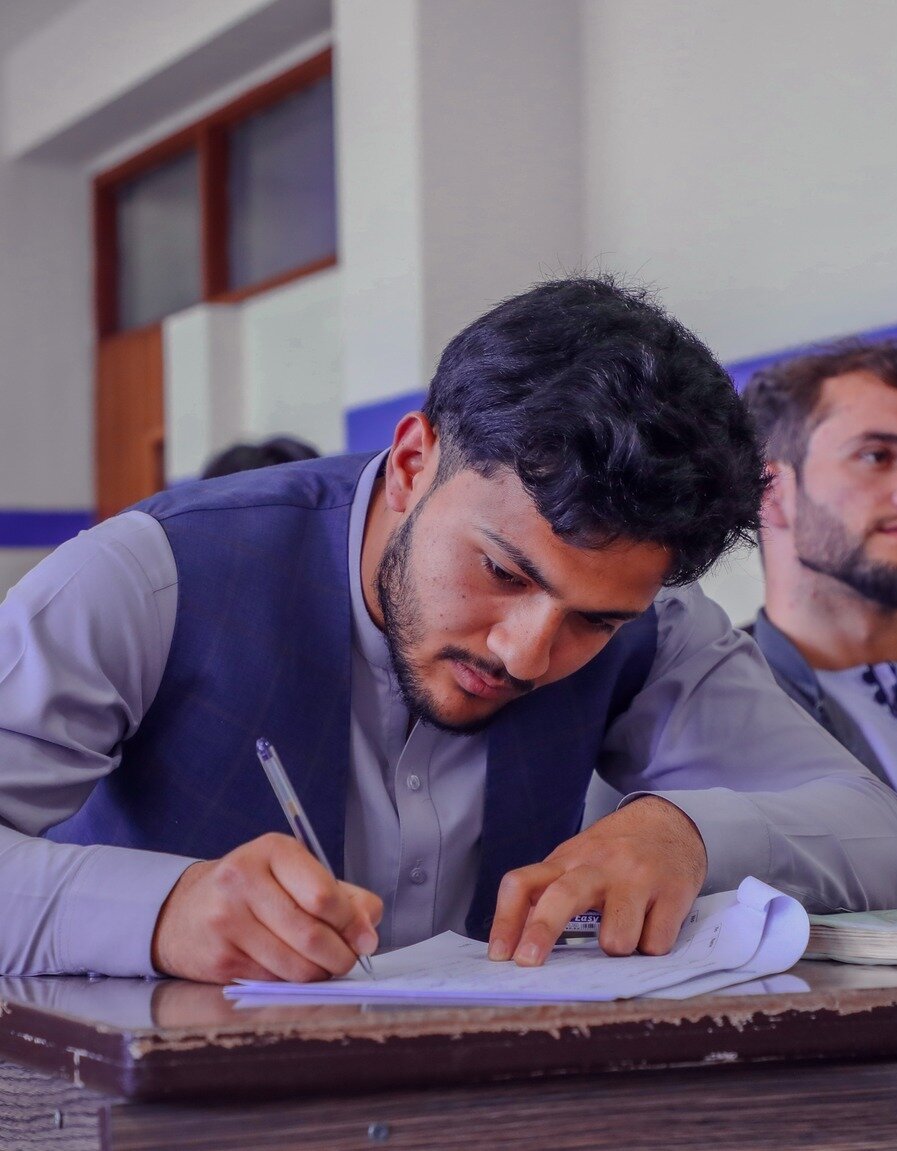
Based on a training session delivered at Kardan University, April 23, 2025
Financial technology (FinTech) is reshaping the global financial sector, offering new tools to foster economic resilience and inclusive growth especially in developing and crisis affected economies. Afghanistan’s recent experience highlights both the transformative potential and the challenges of leveraging FinTech for economic stability and development.
How FinTech Is Building Economic Resilience in Afghanistan and Why It Matters

When I walked into Kardan University on April 23, 2025, to deliver a session on “Understanding FinTech: The Future of Financial Services,” I could feel a mix of curiosity and hope in the room. The students were eager to know not just about the latest buzzwords in finance, but about real solutions for the challenges their families and communities face every day. As someone who’s worked in Afghanistan’s financial sector and lived through its ups and downs, I know firsthand how technology can be a lifeline in times of crisis.
Why FinTech Is More Than Just a Buzzword
Let’s be honest: for many people in Afghanistan, traditional banking feels out of reach. Long lines, paperwork, and sometimes a lack of trust in the system have kept millions unbanked. But FinTech like mobile wallets, or blockchain powered platforms like HesabPay has started to change the story. These tools aren’t just about convenience; they’re about survival and dignity. Today, hundreds of millions of Afghanis move through digital channels every day, helping families receive remittances, pay for essentials, or even get humanitarian aid when it matters most.
The Numbers Tell a Tough Story
The last few years haven’t been easy for Afghanistan. World Bank estimates that the Afghanistan’s GDP shrank by a staggering 30% between 2020 — 2022, and about 84% of Afghans live below the national poverty line of AFN 2,268 (about $26) per person per month. Even more alarming, 97% of households struggle to meet basic needs like food and healthcare. These aren’t just numbers they represent real people, neighbors, and friends.
FinTech has made it possible to send money across mountains and into remote villages where banks don’t exist. But let’s be clear: the journey is just beginning. Right now, around 1% of Afghans use mobile money services, and most agents are concentrated in cities.
Still, platforms like HesabPay have reached 600,000 users and are growing, showing there’s real appetite for digital solutions.
Supporting Small Businesses and Families
I’ve seen small shop owners use mobile payments to keep their businesses afloat during lockdowns or political instability. For families, digital wallets mean quicker, safer access to remittances or emergency funds. These stories echo what global research shows: countries that embraced FinTech during the COVID-19 pandemic bounced back faster, thanks to the flexibility and reach of digital payments.
Overcoming Barriers One Step at a Time
Of course, it’s not all smooth sailing. Many women in Afghanistan still don’t have IDs (National Tazkira) or mobile phones, only 17% of women had a national ID (National Tazkira) in 2019, and just 31% owned a mobile phone in 2021. Cultural trust in traditional Hawala networks remains strong, and digital literacy is a hurdle, especially for older generations and rural communities.
But every time a student at my session shared how their family used a mobile wallet or learned about QR payments, it reminded me that change is possible, one person at a time.
- Gender Gap and Digital Exclusion
The exclusion of women from digital finance is one of Afghanistan’s most pressing challenges. Without a national ID, women cannot open digital wallets or receive aid. Cultural norms often prevent women from owning mobile phones or traveling to register for IDs. As a result, women are disproportionately left out of the financial system, unable to access even the most basic services.
This exclusion is not just a matter of equity; it is a barrier to national recovery. Digital finance can empower women by providing discreet, secure access to funds, but only if we address the underlying barriers of ID ownership, mobile access, and digital literacy.
- The State of Digital Finance: Progress and Pain Points
Afghanistan’s digital finance sector has grown, but it faces significant obstacles:
- Limited Reach: Fewer than 1% of Afghans use mobile money services, and most agents are in cities.
- Infrastructure Gaps: While 88% of the population has GSM coverage, network quality is poor in rural areas, and smartphone ownership is low, especially among women.
- Trust and Awareness: Many Afghans are unaware of digital finance options or lack confidence in using them. Hawala networks remain dominant due to their deep roots in Afghan society.
Despite these challenges, there are bright spots. Platforms like HesabPay, which integrates with APS and offers blockchain based wallets, are expanding rapidly.

Lessons Learned and What Needs to Happen Next
- Make the System Work for Everyone
We need a digital payment ecosystem that’s open and interoperable where banks, mobile money operators, and microfinance institutions can all connect seamlessly. The Afghanistan Payment System (APS) was built for this, but recent crises in Afghanistan have set it back. Reviving and modernizing this infrastructure is critical for scaling digital finance and making sure aid reaches those who need it most.
- Invest in People, Not Just Technology
Technology alone isn’t enough. We must invest in financial and digital literacy, especially for women and rural communities. In my experience, when people understand how digital money works and trust it, they’re much more likely to use it.
- Embrace Local Networks
Hawalas have been trusted for generations. Instead of sidelining them, why not integrate them into the digital ecosystem? If people can cash out their digital funds with someone they already trust, adoption will skyrocket.
Looking Ahead: Hope on the Horizon
Despite the challenges, I left my session at Kardan University feeling optimistic. The next wave of FinTech AI driven financial tools, central bank digital currencies, and smarter mobile apps could make financial services even more accessible and secure. But the real key is collaboration: between government, private sector, and communities.
FinTech isn’t just about apps and algorithms. It’s about giving people control over their money, helping families weather tough times, and building a more resilient Afghanistan. The stories I heard from students and the data I’ve seen in my work all point to one truth: with the right investment in technology, people, and trust, FinTech can be a force for good in even the most challenging environments.
